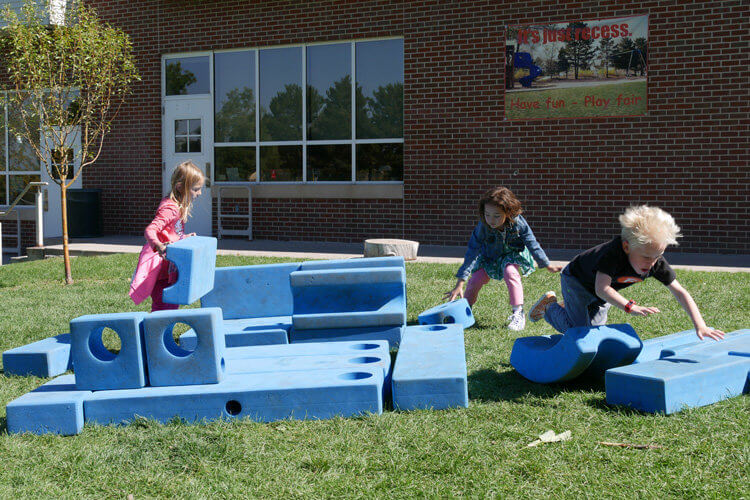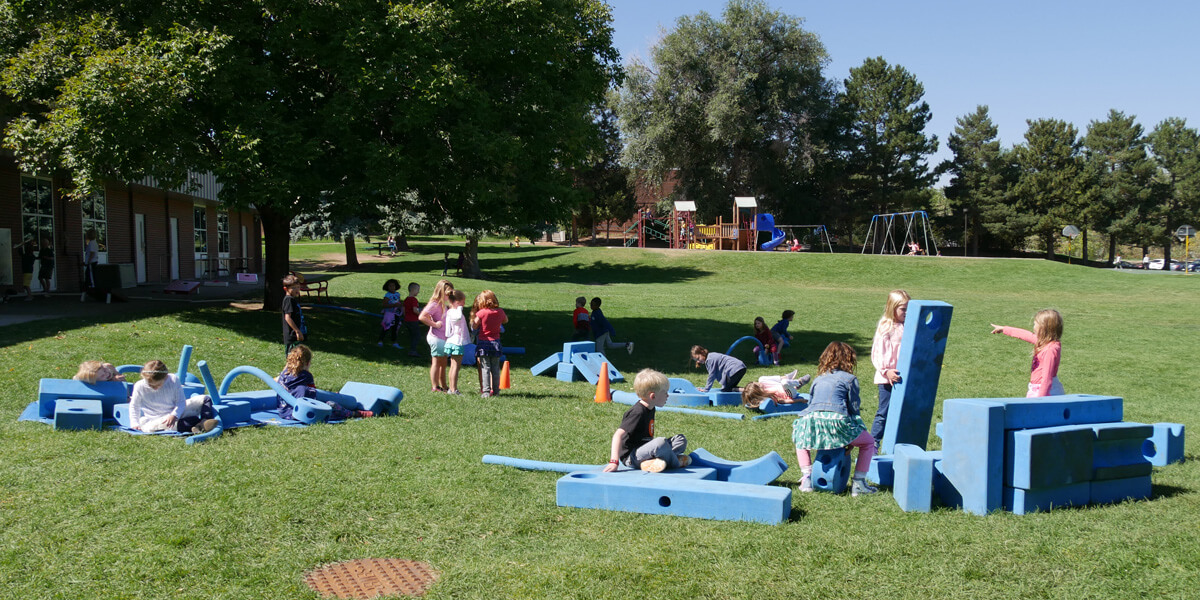When I walk through the Lower School hallways and classrooms, I see spaces filled and overflowing with the creations of our imaginative students. Colorado Academy is a school that takes pride in encouraging our students to think, innovate, and create, whether they are in the Fifth Grade, Third Grade, or Kindergarten.
It’s inspiring to see how our teachers foster this philosophy and motivate students to express themselves in a variety of ways—from blue blocks on the playground to new approaches to math. I feel fortunate to spend every day in a place where the imaginations of children are fostered and revered.
As a child, my friends and I spent hours immersed in imaginative play. We didn’t call it anything special or know how important it was for our childhood development. We just wrote lesson plans and played school, built submarines and discovered the depths of the ocean, and constructed spaceships and explored the galaxy. We just played.
So much has changed since I was a child, but imaginative play has not. Now there is much research in the fields of psychology and education showing that play is an important part of child development because it helps improve student learning. In a 2012 article in Psychology Today, psychologist and author Scott Barry Kaufman wrote, “a school atmosphere in which pretend games are encouraged, or even just tolerated in the curriculum or recess play of children has also been shown to lead to even greater amounts of imaginativeness and enhanced curiosity, and to learning skills in preschoolers or early school-agers.”

Creativity at Colorado Academy
At Colorado Academy, we don’t just tolerate pretend games and imaginative creativity. By facilitating activities and projects where students can express themselves and share their learning, teachers encourage our students to dip into their creative brains.
At recess, students use our blue blocks to construct everything from a lemonade stand, where they conduct their own business, to a large “machine” with a working lever. Students use the blue blocks for playground fun, and without even knowing it, engage in collaboration, design, imagination, engineering, construction, and at the end, celebration.
Imagination and creativity at recess aren’t limited to the blue blocks. Children create fairy houses in the trees surrounding the playground and transform themselves into woodland animals, futuristic robots, or ninja warriors in their free play time. Students are always excited to share their new ideas, games, and projects with their teachers.
It is easy to see how real learning and good fun can go hand in hand at recess, but it might be more challenging to see how that translates over to the classroom. Recently, I sat in on a Third Grade class where students were asked to illustrate multiplication problems with pictures that represented the items in the word problems, for example, 5 baseball games of 9 innings each. For a short time, the room was abuzz with mathematical artistry as imagination and real learning were working together. In another example, Lower School art students thought about what they wanted to share through their art and used chalk spray paint to spread messages of joy and happiness all across CA’s campus.
Books to spark imagination
Sharing books is something I love, and I can’t help but think of books that celebrate Imagination in young children. As children, my friends and I read Arnold Lobel’s Frog and Toad books. We enjoyed the odd couple characters so much that we would act out each of the short stories on my back patio. Below is a list of other favorite imagination-rich books to spark you and your children into a world of make-believe, enhancing their curiosity and learning.
I’m Bored by Michael Ian Black
Flat Stanley by Jeff Brown
Andrew Henry’s Meadow by Doris Burns
Draw! by Raúl Colón
This Rabbit Belongs to Emily Brown by Cressida Cowell
Dory Fantasmagory by Abby Hanlon
Not a Box by Antoinette Portis
“Hi, Pizza Man” by Virginia Walter
I’m a Frog by Mo Willems
What Do You Do With an Idea? by Kobi Yamada
